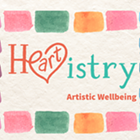For about 80 percent of adults every day, caffeine in moderate doses delivers increased feelings of alertness, decreased feelings of fatigue and gives a handy kick of energy. Through a bit of chemical chicanery, caffeine seems to trick the body into disregarding signals that it is fatigued and needs rest. After all, actual rest takes too long. Ain’t nobody got time for that, especially teenagers who have many pictures to post and tweets to send.
But what are the limits of safety when it comes to consumption of caffeine by teens and children? The answer is not clear, as caffeine has many elements beyond how it may affect blood pressure, appetite, blood sugar level, etc.
After a chewing gum giant recently launched a product containing the equivalent caffeine content of four cups of coffee per pack, the FDA chimed in that maybe they ought to look into the growing trend of adding caffeine and other stimulants to food products. The manufacturer soon pulled the gum from the market. This is not the first time the FDA has been involved with caffeine regulation — they did so in the 1950s when deciding a safe amount to allow in cola. They similarly stepped in a few years ago when the production of a beverage combining caffeine and alcohol was deemed a dangerous marriage.
Such stealthy stimulants do concern me considerably when it comes to the health and well-being of our children. I worry that, while an adult might say “Whoa!” if they saw an 11-year-old pour a cup of coffee, they might not notice the same kid chewing a piece of “double latte mochachino with room for cream” gum. And I think even more pressing is what happens to kids who become accustomed to overriding the body’s intrinsic traffic lights that are designed to elicit the urge for essential rest.
Good call FDA, I’m glad somebody is watching out for us.




















